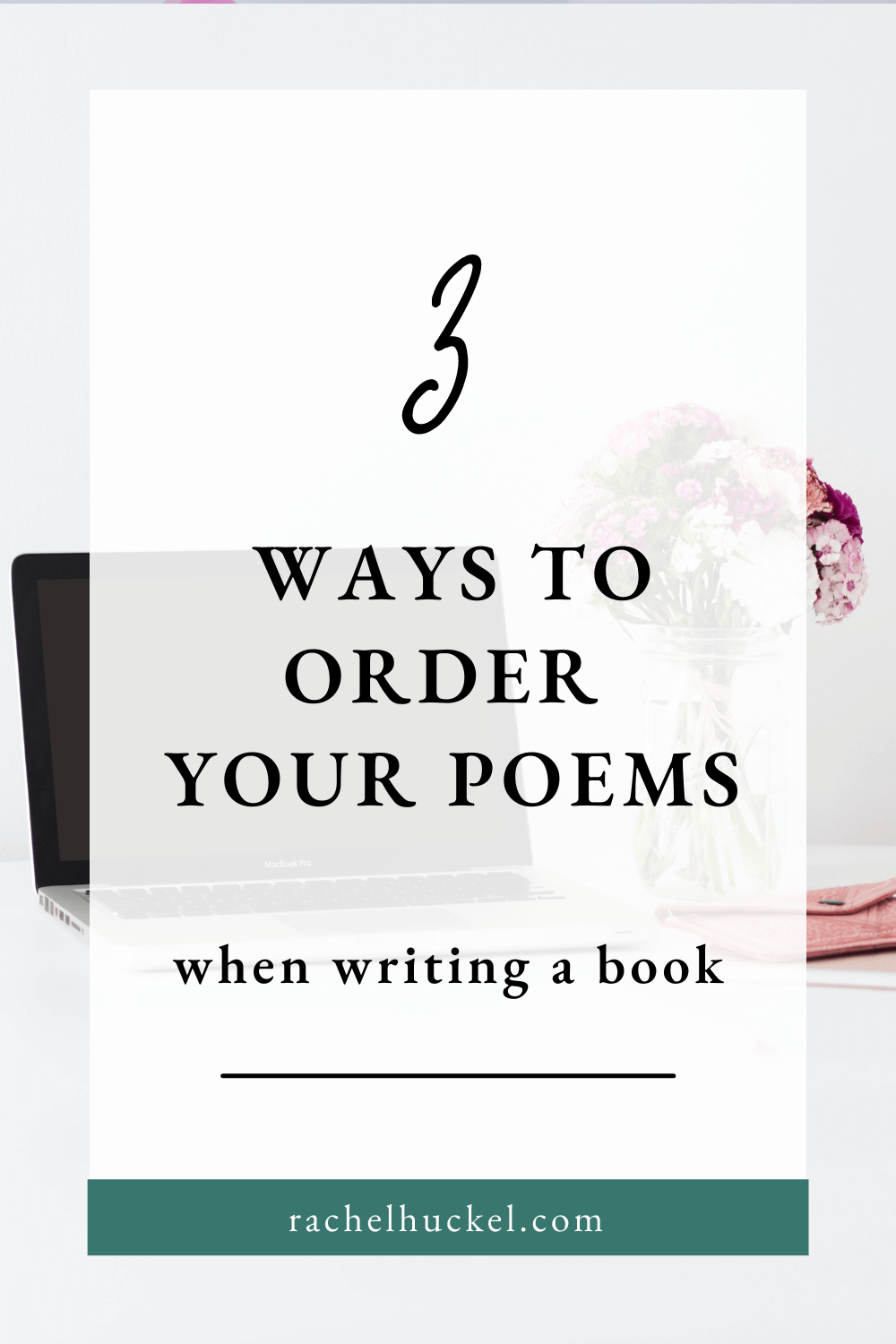3 Ways to Order Your Poems in Your Poetry Collection
Poetry books are works of art. You can’t just slap all the poems you’ve written into a Word document and call it a day.
Well, you could. But you would be missing out on the opportunity to make your poems really shine.
If you want to create a poetry collection you can be proud of, you need to focus on the order of your poems. The majority of people read poetry collections just like any other book – from front to back. And a simple change in the order of your poems could mean a drastic change in how your readers interpret your collection.
Is one order better than another? Not necessarily. It all depends on the themes, meanings and stories you are hoping to convey in your book.
I encourage you to experiment with different ways of organising your collection to find one that feels right.
Let’s look at the 3 best ways to order your poems when writing a book.
Time-focused
If you’ve written poems over a long period of time, then placing your poems in a chronological order can be one of the best ways to reflect your personal journey.
Perhaps you have gone through a hard season and experienced healing – share your journey. Some poetry authors even include the date on which they wrote each poem. This can be powerful in establishing a sense of connection between the poet and the reader. The audience feels as though they have stumbled across someone’s diary.
If dating your work isn’t your thing, you can always title your chapters to show time passing. You can name them after the seasons, the phases of the moon, the growth of a tree – get creative.
2. Story-focused
Poets are storytellers too. Consider your own story: Were there dark times when you experienced hurt, grief, or confusion? What about times when you grew as a person without even realising? Is there something you have learnt from your experiences that you would like to share with others? We all have stories to tell. Try ordering your poems in a way that best reflects the journey you have been on.
3. Theme-focused
As poets, we tend to write about the same core themes – just from different angles. My first book focused on themes of trust, love, and belonging. Identify the underlying themes in your poems and separate them into chapters based on each theme. Just make sure you have a broad theme for your whole collection that can link the sub-themes together. This can help your readers relax into your collection because each poem flows smoothly onto the next. You want your readers to become absorbed in your book.
Keep in mind:
No matter which order you choose, you always want to be taking the reader on an emotional journey. Even if they haven’t experienced exactly what you have, your readers will connect with the emotions behind your story. Hone in on that and you’ll create a strong and meaningful book.
Self publishing a poetry collection? Download my free timeline templates for poets. This download includes a sample timeline and a blank template to use for your own book.
Hi, I’m Rachel!
I’m a poet and poetry editor based in Sydney, Australia.
I help poets write with purpose and create books that they are proud of.
I’m usually found with a coffee in one hand and a pen in the other.
I’m obsessed with stories and love equipping poets to share their own.



